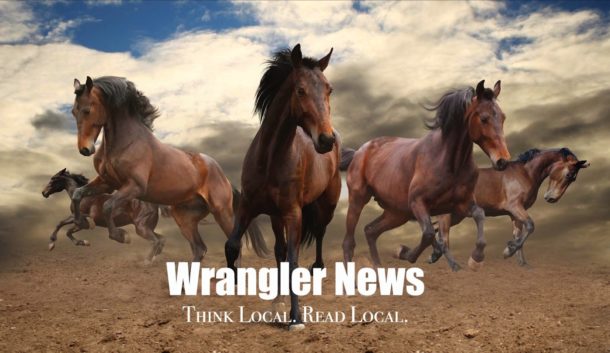At first glance, the STAR program, with its cool math and science projects, field trip and time for play and sports, sounds like a typical summer camp.
But taking a closer look, Success Through Academic Reform, nicknamed STAR, is not the usual camp, nor does it include the typical camp-goer.
“Many of the students that come to STAR are not the ones that are going to volunteer to go to extra school,” said Khalid Jenkins, program coordinator and a prevention specialist with the Kyrene School District.
Students, who may be struggling socially, behaviorally, emotionally, or academically, are often recommended for the program by teachers, administrators and parents.
But while many initially don’t want to be in summer school, that often changes as the weeks go on, said Jenkins.
In fact, some end up enjoying the camp so much that they ask to come back the next year—and the next, even returning in some cases for all four years of their eligibility.
While considered a camp, the program is nearly as long as a regular school day and is broken into periods for math, language arts, science and character education. Many of the students, said Jenkins, “need that extra structure and the academic work during the summer as well.”
Atypical, however, is that each day begins with non-competitive group problem-solving and team-building as part of Project Adventure Initiatives.
The initiatives span 16 days, starting with simple challenges, such as games to learn their peers’ names, to more difficult ones, such as moving the entire class from one “island”—a three-by-four-foot wooden platform—to another, using only a four- by four-inch by eight-foot beam. They can’t touch the ground or anything else, and if the beam tips and students fall into the “water,” they must start over.
Sometimes they’re down to one or two people when they mess up, said Robert Harding, who’s been a Kyrene teacher for 18 years and helped initiate Kyrene’s STAR Program in 2000 as part of a Safe Schools Grant. No matter how close they are, he makes them start over.
“We want to frustrate them and bring out that emotion because then you’re dealing with the issues that appear when they’re under stress,” said Harding. “You see how they treat each other and where they struggle when they hit adversity.”
During the first week, Harding has the students come up with their own rules to follow, which this year in his class includes no “No put downs,” “Stay focused” and “Everyone must participate and do so safely,” among others.
After each challenge, the classes “debrief,” which Harding describes as “the really important part of the whole process.”
They discuss how easy or hard the task was, what strategies they used, which were successful, which of their self-inflicted rules worked and which they failed to follow, and why the result of the task, such as learning classmates’ names or figuring out to solve a problem as a group, might be important in their regular classrooms and beyond.
They also talk about what it would be like if everyone followed their rules—in their classrooms, homes, and communities—and most quickly agree it would be pretty nice. But many are also quick to point out that not everyone in their lives will follow these rules.
“One of the things we try to get across to them is the fact that [they] can’t control what other people do and say,” said Harding. He tells them, “You can only control how you respond to what they do and say to you. You can’t change people.’”
Project Adventures Initiatives culminates in a field trip to a high-ropes adventure course, where students walk on high wires and leap for trapeze handles, among other potentially terrifying activities, while 30 to 40 feet in the air.
And it’s their peers who support them with safety ropes, not the teachers. “They’re learning to trust each other,” said Harding, which can be enormously beneficial when they leave the program.
“They have to use a lot of community to overcome fear and learn a lot about themselves. What we’ve found is that if they can climb and do the higher level activities, we start to see that the things in school that might be scary to them , like a term paper or a big test, they’re not so scary anymore because they’ve been able to do amazing things during that day of climbing,” said Harding.
While the math, language arts and science classes are traditional, the assignments are not. In science, for example, teams of students must often solve a problem with limited supplies, such as creating a self-propelled car with only Styrofoam cups, a straw, a balloon and a couple of pieces of tape. For another assignment they had to construct a protective container for a raw egg before dropping it from progressively higher elevations. The emphasis in these assignments is as much on problem-solving and collaboration as it is on propulsion, inertia or gravity.
One of the assignments for language arts includes writing a letter to a parent or teacher that discusses what their challenges and struggles were the previous year, what they’ve learned about how their behavior affects others, and how they’ll apply what they’ve learned next year when they go back to school. Many read their letters at the program’s graduation ceremony.
This year’s program also included a community service element, for which students, through the Kyrene Resource Center, helped create hygiene kits for homeless families.
“This is really good for the students who struggle with empathy,” said Jenkins.
The program is open to students entering fifth through eighth grade. Those entering fifth grade participate in STAR Junior program, which doesn’t require them to change classrooms throughout the day.
Harding says he’s had several appreciative parents come up to him later amazed by the change in their students after going through STAR.
But he tells them, simply, “Well, I didn’t do anything. [The kids] did it.”
For a lot of these kids, Harding said, they learn differently, have different needs, and “haven’t really experienced a lot of success in their lives. This is an opportunity to turn things around for them and get them thinking differently.”


